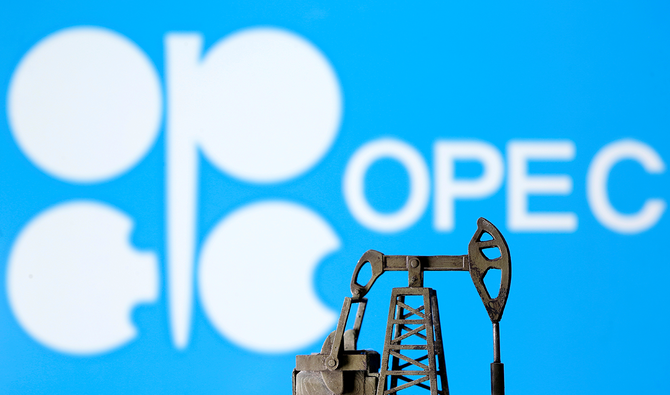
- ARAB NEWS
- 09 Jul 2025

May was easily the best month ever for West Texas Intermediate (WTI), which appreciated nearly 80 percent from May 1 to May 29. Brent rose by 43 percent over the same period.
These are heady numbers, but we should not get ahead of ourselves. Do not forget that WTI hit minus $37 when the May futures contract expired on April 20, and that Brent was close to $70 per barrel in early January. On June 1 midday CET, WTI stood at $35.32 per barrel for WTI and $37.97 per barrel for Brent.
The historic increase in oil prices followed an unprecedented decline of demand in April equating to nearly 30 million barrels per day (bpd) or minus 30 percent of January demand.
In April, OPEC+, an alliance of the Organization of the Petroleum Exporting Countries (OPEC) and its 10 non-OPEC allies, took 9.7 million bpd out of the market to respond to the collapse in demand. That decision followed a dramatic impasse at OPEC+ where Saudi Arabia and Russia could not agree on a cut in production and embarked on a war for market share.
Be that as it may, markets have started to rebalance as many of the major economies gradually ease out of lockdown over the COVID-19 pandemic. Traders estimate Chinese demand to be near levels of May 2019. Russian exporters also see European demand recovering.
This brings the discussion back to OPEC+ which has a scheduled virtual meeting on June 10. Some countries would like to bring it forward to June 4.
It is said that Saudi Arabia, which together with the UAE and Kuwait have announced cuts of 1.2 million bpd above and beyond what was agreed in April, would like to extend the current cuts for OPEC+ beyond June 30. They are currently scheduled to last until June 30 and then be reduced to 7.7 million bpd until Dec. 31 this year, and 5.8 million bpd until April 30, 2021.
Russia’s oil industry is said to be skeptical of extending current cuts beyond June 30, especially as they see Chinese and European demand recovering quicker than anticipated. The demand for kerosene has to be exempt from these forecasts, as it will take longer for air travel to recover than for road traffic — especially freight haulage.
Speaking to Bloomberg and Reuters, OPEC Secretary-General Mohammed Barkindo praised supply cuts and OPEC+ compliance together with non-OPEC cuts to exceed 17 million bpd during the last two weeks.
While that is correct, there is a push both from Russian producers and US shale producers to ramp up production again sooner rather than later. The rationale is easy: If wells are shut in for more than four to six months the costs of restarting them increases by up to two-thirds.
So, the OPEC+ debate has come full circle. Saudi Arabia has a good point in wanting to extend the 9.7 million bpd cuts for another two to three months to ensure the rebalancing of markets gains track. Russia has a good point in highlighting the costs to the industry of such an extension.
It is better to allow market balancing to go further before trimming down production cuts. Especially when looking at the US shale space, anything above a price of $40 for WTI will entice shale producers to bring wells online sooner rather than later, which would bring about another downward move for the price of oil.
In the long run, a prudent approach toward rebalancing the markets may be the right one, especially since there is no visibility of the pace and shape of any economic recovery. Will it be V, U, W, or a series of Ws? As long as the latter remains a possibility, one might be well-advised to err on the side of caution.
• Cornelia Meyer is a business consultant, macro-economist and energy expert. Twitter: @MeyerResources